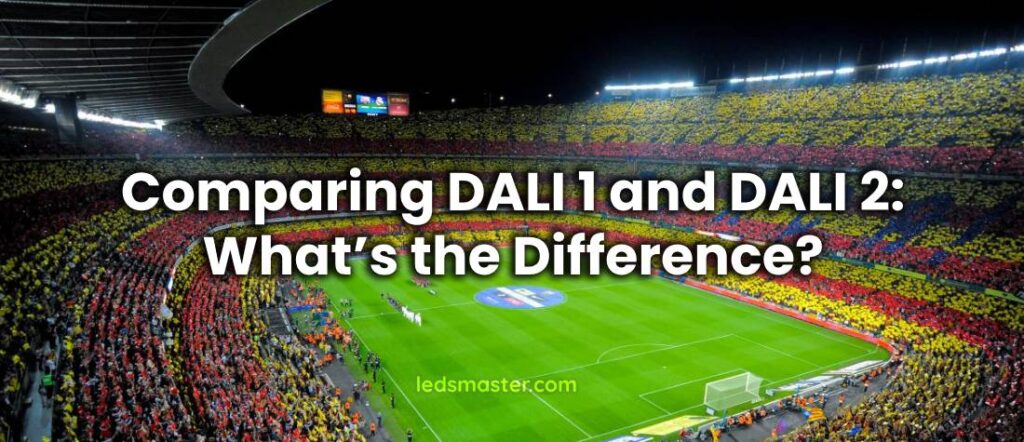DALI (Digital Addressable Lighting Interface) stands out as a significant technology for managing and optimizing lighting systems. Developed by the DALI Task Group, this open standard allows for precise control of lighting fixtures, enhancing both functionality and energy efficiency in various applications. DALI’s digital communication protocol enables intricate control over light levels and other settings, transforming how lighting systems are managed in both residential and commercial environments.
Table of Contents
ToggleHow DALI Works
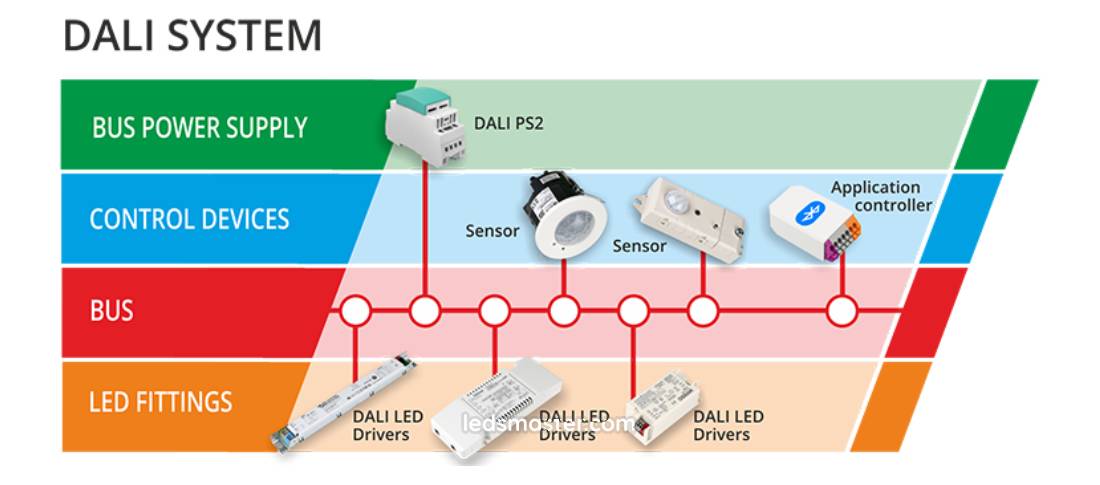
Unique Addressing
One of the fundamental aspects of DALI is its addressing scheme. Each device on the DALI network is assigned a unique address, which allows for precise control over individual luminaires. This addressing system enables both individual and group control of lighting fixtures. For instance, a user can adjust the brightness of a specific lamp or modify settings for a group of lamps simultaneously, providing flexibility and efficiency in managing lighting setups.
Bidirectional Communication
DALI’s bidirectional communication is a key feature that sets it apart from simpler lighting control systems. This bidirectional capability means that commands can be sent from the central controller to the luminaires, and vice versa. When commands are issued, they may include adjustments to settings such as brightness levels, color temperature, or switching operations. This flexibility allows users to fine-tune their lighting environment to meet specific needs or preferences.
In addition to sending commands, the luminaires are equipped to send status updates and feedback back to the controller. This feedback mechanism provides real-time information about the operational status of the luminaires. For example, luminaires can report issues such as lamp failures or communication errors, allowing for timely maintenance and troubleshooting. This two-way communication enhances the overall responsiveness and reliability of the lighting system, ensuring that any potential problems are addressed promptly.
Digital Communication Network
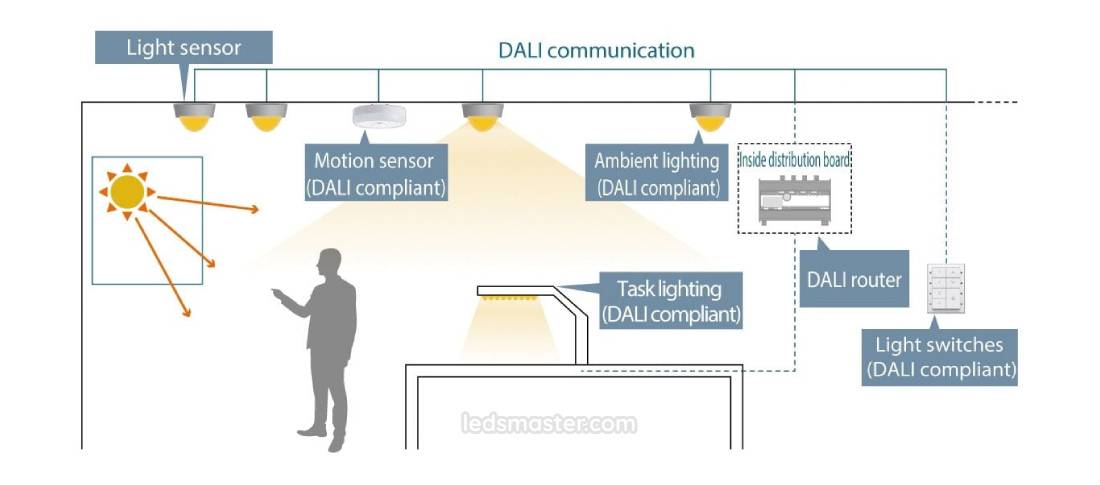
DALI operates on a sophisticated digital communication network designed for effective lighting control. This network utilizes a bus system, typically running at a low voltage of 16V, to connect all devices involved. The bus carries both power and communication signals between the central lighting controller and the various luminaires within the system. Each device on the network is connected to this bus, ensuring that data and control signals can be transmitted efficiently.
Dynamic and Responsive Lighting
The bidirectional nature of DALI communication contributes to creating dynamic and responsive lighting environments. By enabling real-time adjustments and feedback, the system can adapt to changing conditions and user preferences. For instance, in a commercial space with varying lighting needs throughout the day, DALI allows for automatic adjustments based on time-of-day schedules or occupancy sensors. This adaptability not only improves the functionality of the lighting system but also contributes to energy efficiency by ensuring that lighting is used only as needed.
| Feature | DALI 1 | DALI 2 |
|---|---|---|
| Number of Devices | Up to 64 devices | Up to 256 devices |
| Communication Speed | Slower communication speed | Faster communication speed |
| Color Control | Basic color control | Advanced color control |
| Dimming Resolution | Basic dimming resolution | Higher-resolution dimming |
| Device Support | Primarily luminaires | Supports luminaires, sensors, switches |
| Group Control | Up to 16 groups | Up to 16 groups |
| Scene Setting | Supported | Supported |
| Feedback Mechanism | Basic feedback | Enhanced feedback |
| Interoperability | Standard compatibility | Improved compatibility |
| Complex Control Scenarios | Limited | Supports more complex scenarios |
| Installation Complexity | Lower complexity | Potentially higher complexity |
| Cost | Generally lower | Potentially higher due to advanced features |
Implications of DALI
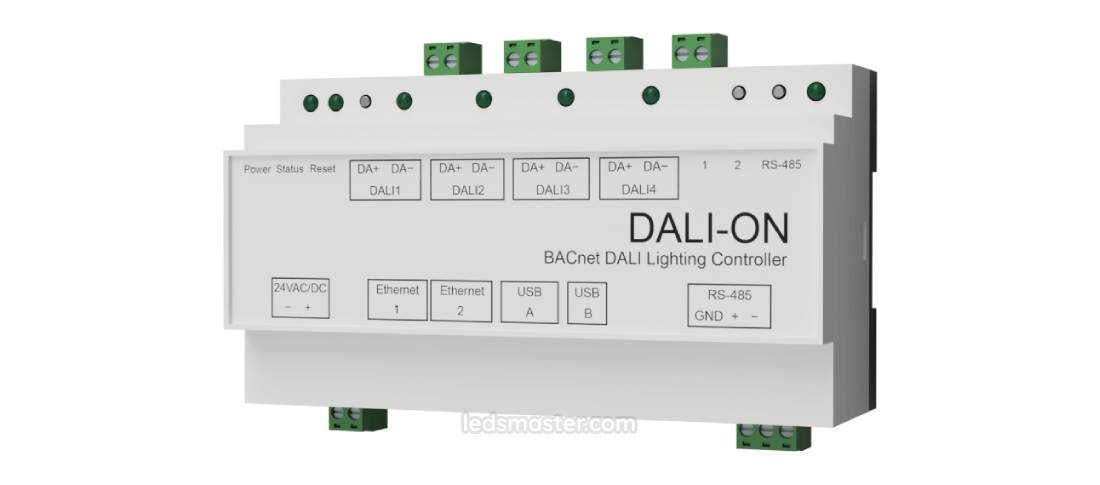
Simplified Integration and Interoperability
One of the most significant advantages of adopting DALI technology is its ability to simplify the integration of lighting control systems. DALI supports a broad range of devices from various manufacturers, which fosters interoperability across different products. This means that users are not confined to a single brand or product line, allowing for greater flexibility in choosing components for their lighting systems. The ability to mix and match products without encountering compatibility issues streamlines the design and installation process, making it easier to create customized lighting solutions that meet specific needs and preferences.
Enhanced Energy Efficiency
DALI’s capability to provide precise control over lighting levels contributes significantly to energy efficiency. By allowing for detailed adjustments based on the specific needs of a space and the time of day, DALI helps to reduce unnecessary energy consumption. For example, lighting levels can be dimmed or adjusted during off-peak hours or when natural light is sufficient, leading to substantial energy savings. This level of control not only supports sustainability efforts but also lowers operational costs associated with energy use.
Proactive Maintenance and System Reliability
Another critical benefit of DALI is its feedback mechanism, which plays a crucial role in proactive maintenance. DALI’s bidirectional communication allows luminaires to send status updates and alerts back to the central controller. This feature helps identify issues such as lamp failures or system malfunctions early, enabling prompt action to address these problems before they lead to more significant disruptions. By providing real-time feedback, DALI reduces the need for frequent manual inspections and maintenance, thereby enhancing the overall reliability of the lighting system. This predictive capability ensures that the system remains operational and efficient, minimizing downtime and maintenance costs.
Flexibility for New Installations and Retrofits
DALI’s versatility makes it an excellent choice for both new installations and retrofitting existing lighting systems. For new projects, DALI provides a robust framework for designing advanced lighting control solutions that can adapt to a variety of scenarios and user requirements. Its scalability and flexibility mean that lighting systems can be tailored to meet the specific demands of different environments, whether they are commercial spaces, residential areas, or industrial facilities.
For retrofitting projects, DALI offers the advantage of integrating with existing infrastructure to enhance functionality and performance. Upgrading to a DALI system in an older installation can improve control capabilities, enable energy savings, and provide additional features such as automated lighting adjustments and system feedback. This adaptability makes DALI a valuable tool for modernizing lighting systems and extending their operational lifespan.
Features of DALI 1
Support for Up to 64 Devices
DALI 1, the pioneering version of the Digital Addressable Lighting Interface protocol, laid the groundwork for digital lighting control with several foundational features. A primary characteristic of DALI 1 is its support for up to 64 devices on a single communication bus. This capability allows for a moderate-sized network of lighting fixtures to be managed effectively from a central controller. Each device within this network can be assigned a unique address, enabling precise control over individual luminaires or groups of luminaires. This addressing scheme is crucial for applications where fine-tuned lighting control is necessary, as it allows users to manage and adjust settings for each fixture independently or collectively.
Group Control Capabilities
In addition to individual addressing, DALI 1 supports the formation of up to 16 groups. This feature allows users to control multiple fixtures simultaneously, providing significant flexibility in lighting design. By grouping luminaires, users can create cohesive lighting scenes and adjust the settings for entire sections of a space with a single command. This functionality is particularly beneficial in environments such as theaters, conference rooms, and galleries, where different lighting setups are often required for various activities or presentations. The ability to control groups of fixtures makes it easier to achieve the desired ambiance and lighting effects, enhancing the overall user experience.
Scene Setting
DALI 1 also includes a scene-setting feature that allows users to create and recall predefined lighting scenarios. This capability enables the system to store multiple lighting configurations, which can be activated as needed. For instance, a theater might use different scenes for rehearsals, performances, and audience seating, each with its own specific lighting arrangement. Similarly, a conference room might have preset scenes for presentations, meetings, and casual gatherings. The scene-setting feature simplifies the process of changing lighting setups and ensures that the appropriate lighting conditions are achieved with minimal effort.
Limitations of DALI 1
Despite its innovative features, DALI 1 has some limitations that affect its suitability for more advanced lighting control scenarios. One notable limitation is its lack of support for complex control functions, such as advanced color control or high-resolution dimming. The protocol’s basic dimming capabilities and limited color control options may not meet the needs of installations requiring more sophisticated lighting effects or precise color adjustments.
Additionally, DALI 1’s communication speed is relatively slow compared to later versions of the protocol. This slower communication rate can impact the system’s responsiveness, particularly in larger installations with many devices. The delay in transmitting commands and receiving feedback may affect the overall performance of the lighting system, making it less ideal for applications where rapid adjustments are essential.
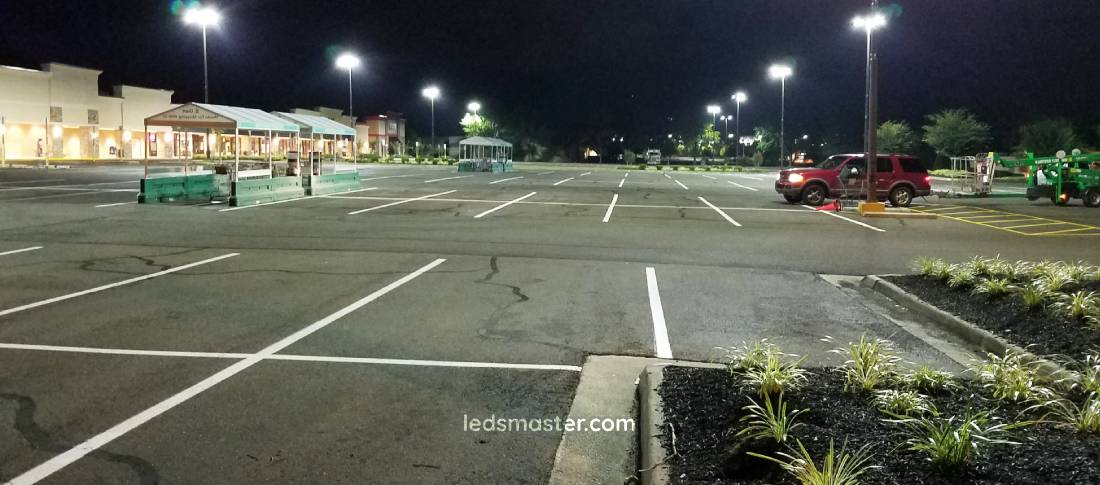
Features of DALI 2
Increased Device Support
DALI 2 represents a significant advancement over its predecessor by dramatically expanding the number of devices that can be supported on a single bus. While DALI 1 accommodates up to 64 devices, DALI 2 increases this capacity to up to 256 devices. This enhancement allows for greater scalability in lighting installations, making DALI 2 suitable for larger and more complex environments. Whether it’s a sprawling commercial space, a large public building, or an extensive industrial facility, DALI 2’s increased device capacity ensures that a wide array of luminaires and control devices can be integrated and managed effectively from a single network.
Advanced Color Control and High-Resolution Dimming
One of the standout features of DALI 2 is its support for advanced color control and high-resolution dimming. Unlike DALI 1, which offers basic color control and dimming options, DALI 2 introduces more sophisticated capabilities that allow for precise adjustments to both color temperature and brightness levels. This improvement enables users to fine-tune the lighting environment with greater accuracy, creating customized lighting schemes that meet specific needs and preferences. Enhanced color control is particularly valuable in applications where precise color rendering is crucial, such as in art galleries, museums, or retail environments where lighting plays a key role in showcasing products or artwork.
The high-resolution dimming feature of DALI 2 provides smoother and more gradual transitions between lighting levels. This capability is essential for achieving the desired ambiance and minimizing abrupt changes in light intensity, which can be disruptive or harsh. The improved dimming resolution contributes to a more refined and pleasant lighting experience, enhancing the overall quality of the lighting system.
Support for New Device Types
DALI 2 expands the range of functionalities that can be integrated into the lighting system by supporting new types of devices. In addition to luminaires, DALI 2 includes compatibility with sensors and switches. This expanded support allows for more comprehensive and versatile lighting control solutions. For example, the integration of sensors enables automated lighting adjustments based on occupancy or ambient light levels, further enhancing energy efficiency and user convenience. Similarly, the inclusion of switches provides additional control options, allowing users to interact with the lighting system through physical interfaces or remote controls.
Improved Communication Protocol
The communication protocol in DALI 2 has been significantly improved to support faster communication speeds. This enhancement addresses one of the key limitations of DALI 1, which had relatively slow communication rates that could affect system responsiveness. With DALI 2, the faster communication speeds reduce latency and improve the overall performance of the lighting system. This is particularly advantageous in large installations where quick and responsive adjustments to lighting settings are essential. The improved communication protocol ensures that commands are executed promptly and that feedback is received in real-time, contributing to a more efficient and effective lighting control experience.
Differences Between DALI 1 and DALI 2
While both DALI 1 and DALI 2 serve the core function of controlling lighting systems, several key differences highlight the advancements introduced with DALI 2. These differences impact device support, functionality, communication speed, and device compatibility, making DALI 2 a more robust solution for modern lighting control needs.
Device Support and Scalability
One of the most significant differences between DALI 1 and DALI 2 is the number of devices each can support. DALI 1 is limited to managing up to 64 devices on a single bus. This limitation makes it suitable for smaller installations or simpler setups where fewer luminaires and controls are required. In contrast, DALI 2 expands this capacity dramatically, supporting up to 256 devices on a single bus. This enhancement allows DALI 2 to handle larger and more complex installations, such as extensive commercial spaces, large public buildings, or sprawling industrial facilities. The increased scalability of DALI 2 provides greater flexibility in designing and managing extensive lighting systems.
Enhanced Functionality
DALI 2 introduces several improvements in functionality compared to its predecessor. The protocol offers advanced color control and higher-resolution dimming capabilities that surpass the basic features available in DALI 1. With DALI 2, users can achieve more precise adjustments to both color temperature and brightness levels, which enhances the overall lighting quality and adaptability. This advanced control is particularly valuable in settings where precise color rendering and smooth dimming transitions are critical, such as in art galleries, retail environments, or high-end residential projects. DALI 1, by contrast, provides only basic color control and dimming options, which may not meet the needs of more sophisticated lighting applications.
Communication Speed
Communication speed is another area where DALI 2 significantly improves upon DALI 1. DALI 2 features faster communication speeds that reduce latency and enhance the system’s responsiveness. This improvement is crucial in larger installations where quick and accurate adjustments to lighting settings are essential. The reduced latency ensures that commands are executed promptly and that feedback is received in real-time, leading to a more efficient and effective lighting control experience. In comparison, DALI 1’s slower communication speeds can affect the overall performance of the system, particularly in environments requiring rapid and dynamic changes in lighting.
Expanded Device Compatibility
DALI 2 also introduces support for a broader range of devices, which represents a notable enhancement over DALI 1. While DALI 1 primarily supports luminaires, DALI 2 adds compatibility with additional device types, including sensors and switches. This expanded device support enables more integrated and versatile lighting control solutions. For instance, the inclusion of sensors allows for automated adjustments based on occupancy or ambient light levels, improving energy efficiency and user convenience. Similarly, the support for switches provides users with additional control options, such as physical interfaces or remote controls, which can further enhance the functionality of the lighting system. DALI 1, on the other hand, does not support these additional device types, limiting its versatility in certain applications.
Implications of Upgrading to DALI 2
Upgrading from DALI 1 to DALI 2 can offer several substantial advantages, particularly in larger or more complex lighting installations. This transition is not only a technical enhancement but also a strategic decision that can impact the overall efficiency, flexibility, and quality of lighting control systems. However, it’s essential to weigh these benefits against the potential costs and logistical considerations involved in the upgrade process.
Enhanced Flexibility and Control
One of the primary benefits of upgrading to DALI 2 is the increased flexibility and control it offers. With support for up to 256 devices compared to DALI 1’s limit of 64, DALI 2 accommodates larger installations with more extensive networks of luminaires and control devices. This expanded capacity enables more sophisticated and scalable lighting designs, making it easier to manage complex environments such as large office buildings, retail spaces, or public venues.
DALI 2’s advanced functionality, including improved color control and higher-resolution dimming, further enhances the ability to create precise and customizable lighting scenarios. This means that users can achieve more accurate color rendering and smoother transitions in brightness levels, which significantly improves the quality of the lighting environment. For applications where lighting aesthetics and performance are critical—such as in museums, high-end retail stores, or professional photography studios—these enhancements can lead to a more refined and effective lighting experience.
Improved Responsiveness and Efficiency
The faster communication speeds of DALI 2 contribute to a more responsive and efficient lighting control system. In installations where real-time control and quick adjustments are necessary, such as in dynamic environments or settings with frequent changes in lighting requirements, DALI 2’s improved performance is a considerable advantage. Reduced latency ensures that commands are executed promptly and that feedback is received in real-time, leading to smoother operation and better overall system performance.
This increased responsiveness can enhance operational efficiency, minimize delays, and provide a more seamless user experience. For instance, in environments where lighting needs to adapt quickly to varying conditions—such as in live event venues or multi-purpose rooms—the speed and efficiency of DALI 2 can significantly improve the effectiveness of the lighting system.
Considerations for Upgrading
While the advantages of DALI 2 are compelling, upgrading from DALI 1 involves several considerations. The transition may incur additional costs, particularly if existing devices and controllers need to be replaced or retrofitted to be compatible with DALI 2. This includes the expense of new hardware, potential installation costs, and the need to reprogram or adjust the system to accommodate the updated protocol.
Moreover, the decision to upgrade should be guided by a thorough assessment of the specific needs and requirements of the installation. For some systems, the existing capabilities of DALI 1 may still meet the functional demands, and the benefits of upgrading may not justify the associated costs. Conversely, for larger or more complex installations where enhanced control, scalability, and performance are critical, investing in DALI 2 could offer substantial long-term benefits.
Strategic Decision
Ultimately, the choice to upgrade to DALI 2 should be based on a strategic evaluation of how the enhanced features align with the goals and requirements of the lighting system. It’s important to consider factors such as the size and complexity of the installation, the need for advanced control features, and the potential return on investment. Consulting with lighting professionals and conducting a cost-benefit analysis can help make an informed decision that maximizes the advantages of the upgraded system while addressing any potential challenges.
Conclusion
DALI represents a transformative advancement in lighting control, offering enhanced flexibility, control, and efficiency for both new installations and retrofits. The transition from DALI 1 to DALI 2 introduces significant improvements, including expanded device support, advanced color control, higher-resolution dimming, and faster communication speeds. These enhancements enable more sophisticated and scalable lighting designs, particularly beneficial for large or complex environments requiring precise control and rapid adjustments. However, the decision to upgrade should be carefully weighed against potential costs and the specific needs of the installation. A strategic evaluation, considering both the technical benefits and the financial implications, is essential to ensuring that the upgrade delivers optimal value and performance.

